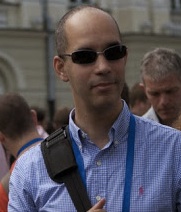
Aruna Kesavan is a graduate student at the Pennsylvania State University
How safe is it to ignore the cosmological constant in the study of isolated systems and gravitational waves?
Analysis of isolated systems, such as stars, black holes and compact binaries, has dominated gravitational science, spanning diverse areas that include geometric analysis, computational relativity, gravitational waves, relativistic astrophysics and quantum black-holes. For example, over the past four decades, powerful positive energy theorems were proved, a theory of gravitational radiation in exact general relativity was developed, computational simulations were carried out to extract energy-momentum emitted during binary mergers, and evaporation of black holes was analyzed using appropriate Hilbert spaces of asymptotic states.
These advances are based on the Bondi-Penrose framework for zero cosmological constant . But by now observations have Continue reading










You must be logged in to post a comment.